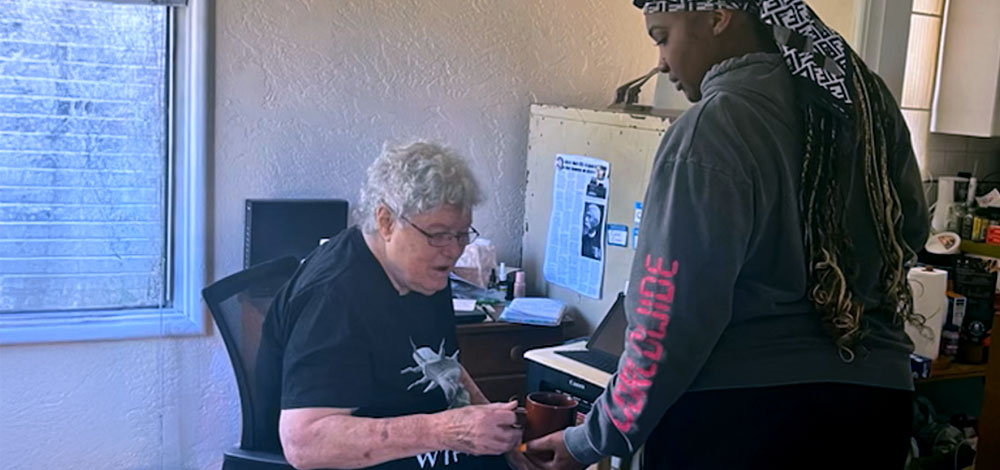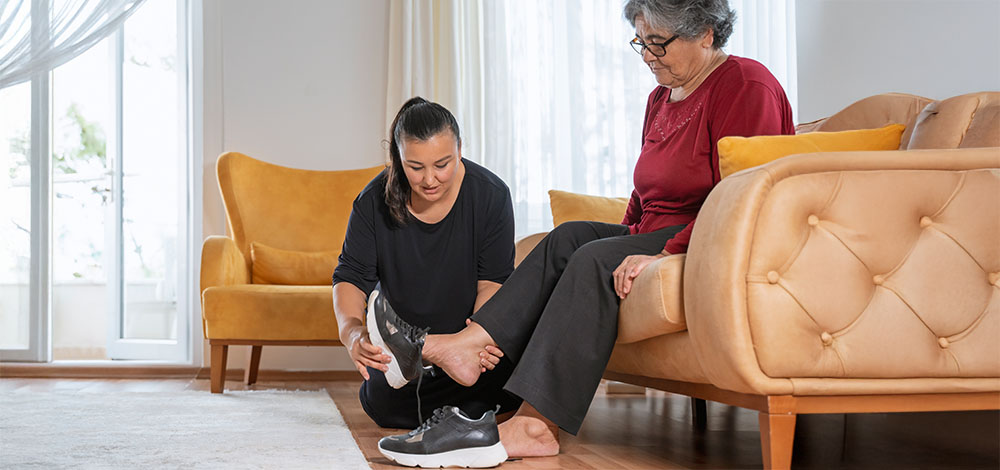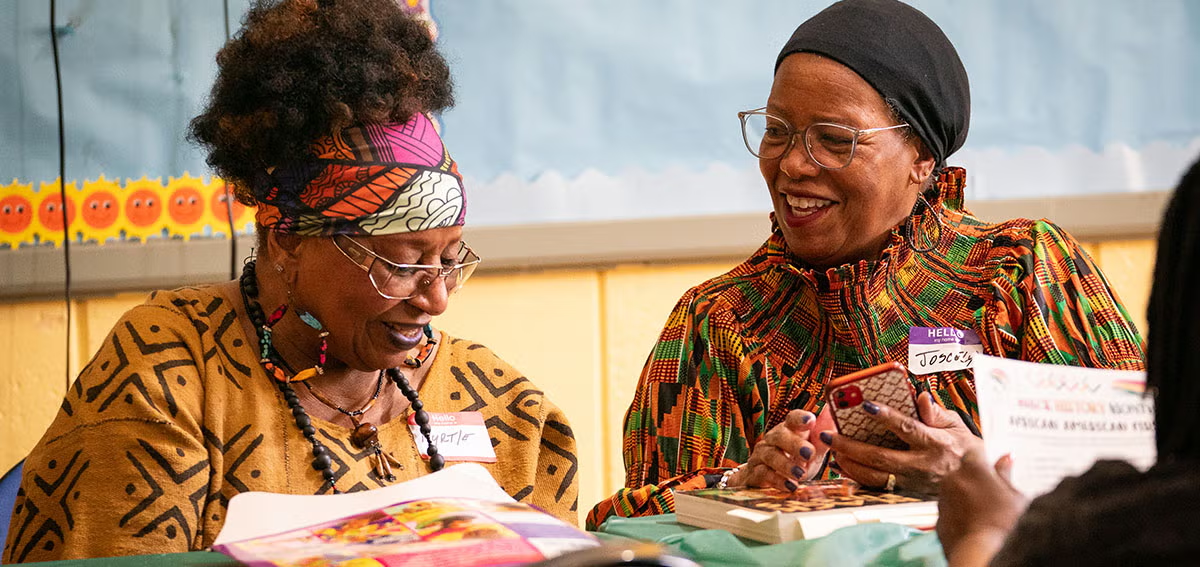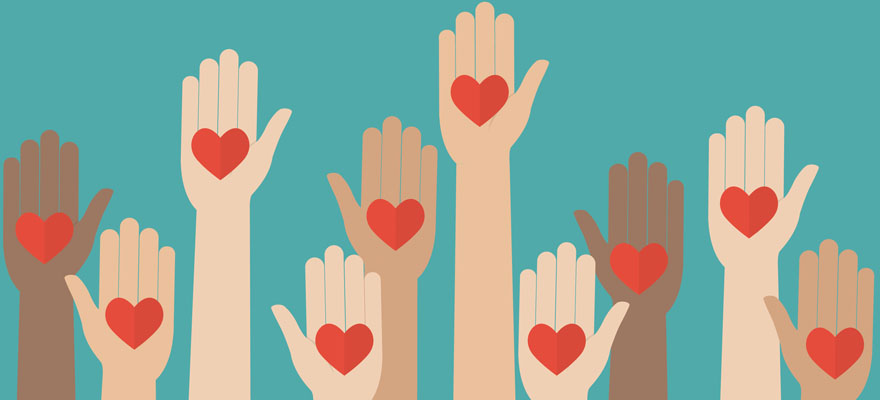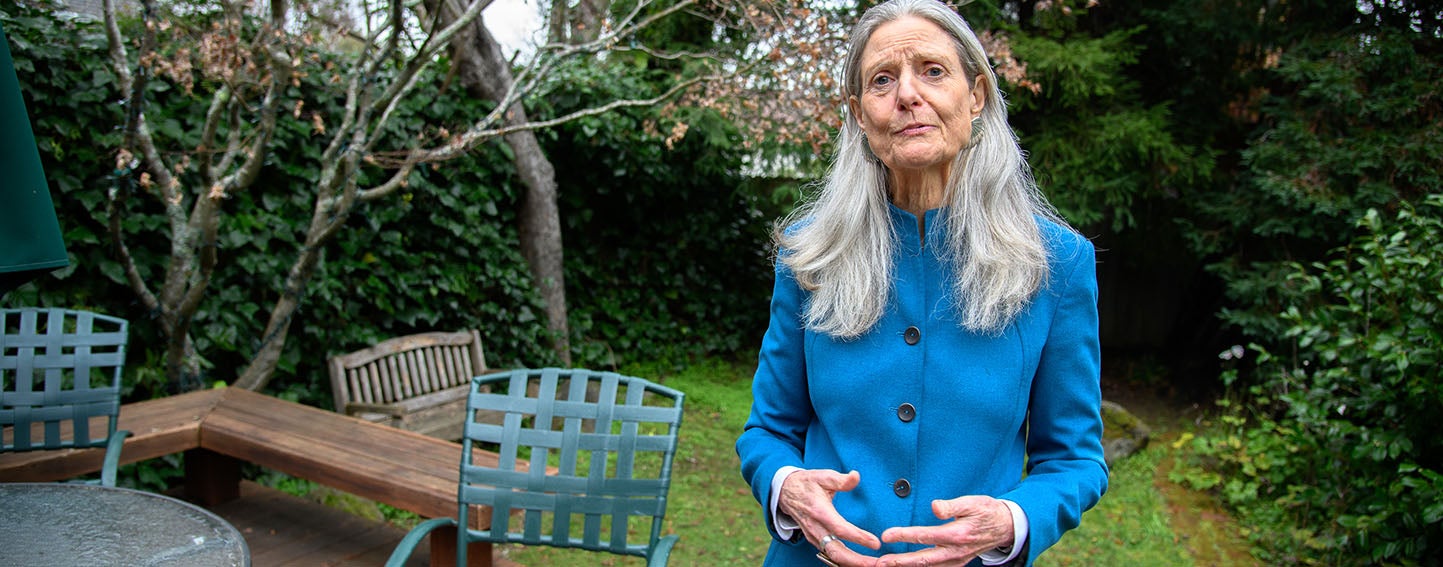
My father died last summer at 95. By many standards, it was a good death. He died at home in his bed near Washington, DC, family members around him. He was in hospice care, and compassionate home health aides helped him through his final weeks. My siblings and I visited often, and I spent several weeks with him near the end.
In his last few years, we made meaningful trips, too. In 2014, when he was just strong enough to travel, we took a family trip to Normandy, where he fought in World War II. In 2017, we went to his hometown, Philadelphia, for a visit with family.
But there were hard lessons as well. In his last two years, he went by ambulance at least six times to the hospital emergency department, usually because he fainted or panicked when he felt weak or confused. One reason, I think, was that he was taking so many medications. Typically, he’d be discharged after a day or two, but some stays lasted longer, weakening him enough to require a stay in a rehab facility. I believe some of those visits might have been avoided had doctors or nurses come to his home.
When I was getting ready to visit my father for what turned out be the final time, I reached out to my friend Katy Butler. I’ve known Katy since the early 1980s, and we once worked for the same magazine. She was completing her new book, The Art of Dying Well, and sent me two chapters, which helped put me into the right frame of mind: I wasn’t going to orchestrate some mythical perfect death. I was going to be present and helpful, lift some of the burden from my mother, and spend some precious final time with my dad.
I sat down with Katy to hear about her new book and her insights on dying well. Our interview has been edited for length and clarity.
Rob Waters: Let’s start with your father’s death since that launched you into thinking about the inhumane ways many people die, and the role technology and overtreatment play in their deaths.
Katy Butler: When I was in my early 50s, my father had a devastating stroke. Came up from his basement study, put on the kettle for tea, fell to the ground. At that moment — he was 79 — he entered the gray zone between active living and active dying. Before advanced medical technology, that tended to be relatively brief. But because of amazing advances, that period has become prolonged. He suffered a lot — some of it unavoidable, some the result of him being given a pacemaker with no discussion of our family’s values or my mother’s exhaustion as a caregiver or his descent into misery, near-blindness, dementia. It was a horrible six and a half years. I saw a total mismatch between what the medical field assumed we wanted, what it provided, and what we actually needed. We needed social work and someone to come take up the throw rug so he didn’t slip. Instead we got a $12,500 pacemaker paid for by Medicare.
I saw the perverse financial incentives in medicine that promote overtreatment and overdiagnosis, and fail to reward relationships, thoughtfulness, and what I call slow medicine, which is medicine based on making sure you’re not causing harm with your treatments. If the family doctor who disapproved of the pacemaker had weighed in, he would have been paid like $46.
In a state of sort of outrage, curiosity, and love, I wrote a piece for the New York Times about my father’s progression and death, and then a book, Knocking on Heaven’s Door. It zigzagged between family memoir — of caregiving, love, and reconciliation — and investigative reporting about the rise of the medical device industry and how 3,000 health care lobbyists in Washington have misshaped what we provide people in this gray zone.
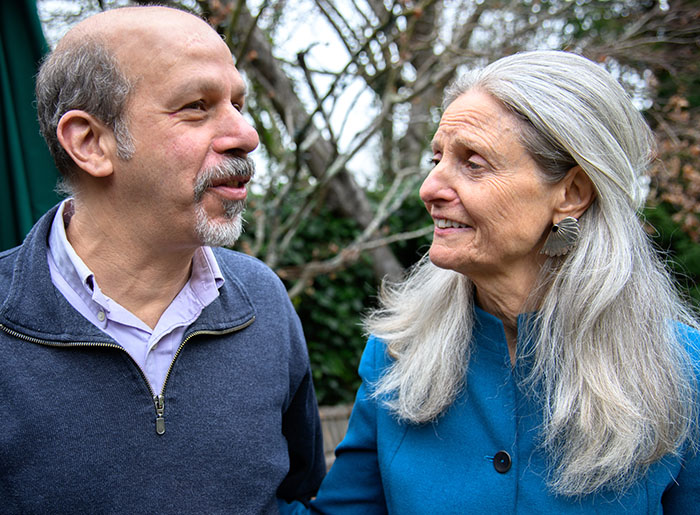
RW: I was impressed by your reporting on the way public policy is motivated by the financial interests of medical device companies.
KB: One-quarter of Medicare dollars go toward care for people in their last year of life. The bulk of that is not going to things people need, like home health services, physician house calls, health aides. Twenty percent of people die in hospitals. Almost 30% of them cycle through intensive care in the last month of life. These things are incredibly expensive. We are financially starving hospice as well as palliative care, which should be provided much earlier in the course of serious illness. That money goes to last-ditch, Hail-Mary, technology-rich and relationship-poor interventions instead of time-intensive, hands-on services.
RW: I love some of the historical detail, particularly about the medieval text Ars moriendi (The Art of Dying).
KB: I love the idea that there’s an art to dying, which implies that we have agency. We’re not simply passive victims or bundles of diagnoses. Ars moriendi was written in 1450 by an unknown Catholic monk who framed dying as a spiritual, domestic, physical ordeal, not a medicalized event or a technological flail. It presents emotions that people are likely to go through on their deathbed — fear, despair, not wanting to let go of life, remorse, and being afraid that you’re going to go to hell.
It was probably one of the very first bestselling self-help books and was printed in all major European languages. It became a model for me that we need to restore moral agency to ourselves. We need new language for this transition. We need to concentrate on the psychological and spiritual challenges of decline and death and stop delegating the management of emotional and spiritual tasks to a medical system with poor emotional intelligence.
Moral Distress in Medicine
RW: Many good people within the medical system are constrained by it.
KB: Exactly, and they suffer moral distress as a result — they feel compelled to do interventions they feel are futile, painful, or inappropriate. For my family, it was a pacemaker. But it could be the fourth line of chemotherapy, dialysis for someone old and fragile, or a feeding tube. Many high-tech devices are disastrous when they prolong dying and misery and cannot restore a decent quality of life.
RW: I called my mother this morning and she couldn’t talk because one of my dad’s caregivers had come over. A beautiful, caring person, and very skilled. She came not only to visit but also because my mother was donating some things, and she’s in need. It speaks to a lot of what’s wrong. In the book, you pay tribute to some of these most important but least rewarded caregivers — the nurses, physical and occupational therapists, home health aides.
KB: The highly paid specialists in medicine deal with the fixable, the reversible. In the realm of the unfixable, you have conditions that people can manage, and manage well, and even maintain a high quality of life. But they’re relationship-based, time-based. An occupational therapist who comes and says “Take away clutter so you don’t trip” is worth their weight in gold, because if you trip and you’re fragile, you may break a bone. It may send you to a nursing home for the rest of your life. Our system rewards interventions and leaves incredible caregivers with a tin cup out, asking for philanthropy.
RW: You write that there are only 7,000 geriatricians — doctors who care for the old — for an older population of 49 million people and climbing. What’s special about these healers, and why do we need more of them?
KB: Geriatricians are specialists but make less money on average than if they had not trained as geriatricians and been regular family doctors. They have a map of what decline looks like over time and can convey to a patient and family what the arc looks like. A lot of people in this stage end up with five or six “ologists” — nephrologist, cardiologist, neurologist. Often, none of them talks to each other, and all prescribe. I have a story of a woman who’s on 22 different meds prescribed by six doctors filled at four pharmacies. She goes to a geriatrician with all her meds in a paper bag. Over the next year and a half, she gets weaned off all but five and becomes more alert, walks better, is less dizzy.
“We need to concentrate on the psychological and spiritual challenges of decline and death and stop delegating the management of emotional and spiritual tasks to a medical system with poor emotional intelligence.”
— Katy Butler, author of The Art of Dying Well
RW: Shouldn’t the need for geriatricians be defined more by a patient’s health than chronological age?
KB: Yes, anyone — young or old, rich or poor — in the stage of frailty I call “the house of cards,” with multiple overlapping and interacting health problems, needs that well-coordinated “slow medicine.” We need care led by someone — or better yet, a team — who sees the big picture, and people often do best getting that care at home. It’s important to remember that a person who’s borne the burden of racism, poverty, and medical neglect for a lifetime may have the same health status as an affluent, well-educated person 20 years older.
RW: From a policy perspective, you call for better funding for hospices and better incentives for people to become geriatricians.
KB: Hospice benefits should be tripled and expanded to cover anyone within the last two years of life. Payments for spending time — as opposed to performing interventions — should be tripled too. We’ve got to find a funding model that better compensates time- and relationship-oriented practice. Kaiser is a good model. All costs are contained within one system that aims to keep you healthy and make sure you don’t get hospitalized unnecessarily. But it’s cruel to restrict hospice to people with a fast-moving, clear-cut terminal diagnosis and six months to live. Many studies show doctors overestimate how long people are going to live. Many people fall through the cracks. They don’t get into hospice. They cycle in and out of hospitals and nursing homes in their last year of life. That’s cruel.
Palliative Care in Medi-Cal
RW: Health plans that care for Medi-Cal members now must provide access to palliative care. What difference can this make for lower-income people?
KB: I think everyone should have palliative care from the first inkling of serious illness. Evidence shows that palliative care early in the game can improve quality of life throughout the course of a serious illness and prepare people for less medicalized deaths. Until we get practical supports in place, like physician house calls and more home health aides, people are going to suffer.
RW: Lower-income people may delay seeking care if they don’t have insurance or a relationship with a primary doctor — then they get diagnosed with advanced serious illness. How does this affect the process of caring for that person, and how do issues of race, class, and privilege affect trust?

KB: Poorer people and people of color are more likely to get bad news late in the game — sometimes from a doctor they’ve never met before. It takes time to get used to the implications of a serious illness. And speaking broadly, across income levels there is an enormous problem of medical distrust among African Americans, summarized in the words “Tuskegee experiments.” After a lifetime of medical neglect and a multigenerational struggle for survival in a violently racist culture, African Americans as a group are more likely to want aggressive interventions at the end of life.
RW: There are some programs, often pilot projects funded by Medicare or Medicaid, that provide low-cost services that are important to a person’s quality of life.
KB: A federal program called PACE (Program of All-Inclusive Care for the Elderly) provides a lot, but only serves 40,000 people nationwide. Some great programs have closed because of insufficient income.
The Best Ending
RW: You closed the book with the story of Louise Manfreddi, who you said had the best end-of-life experience of anybody you’ve known.
KB: That’s not her real name, but she had had a major brain bleed in her fifties, and a very long decline. That could have made for a horrible death, but didn’t. She was in Syracuse, which has a well-organized health care system. In her 70s, she entered the PACE program. They took her to a day program three days a week. She had fun, could get her hair done, get physical therapy, go to the casino and the movies. This improved her quality of life and took the burden off her family. They sent her home with food for the weekend so her husband wouldn’t be overwhelmed. They sent her meds all packaged so all he had to do was open the bag and give them. Everything segued perfectly, so as her needs increased, the system adjusted.
When she got pneumonia and was losing her swallow reflex, nobody said let’s put in a feeding tube. People came to the house three times a day to puree food for her. Instead of treating it as a tragedy, it was treated as the natural course of her decline. She did end up in the hospital, and they wanted to do a procedure, but there was an intelligent conversation. They said, “We could do this. It would be painful. It does have risks. It’s not going to cure the problem.”
The family said no. When Louise stopped eating and drinking, they had another discussion. She got moved to a hospice unit on the top of a nursing home with views of the valley. She died over the course of four days and had a beautiful, peaceful death. Nobody in the family was traumatized. Everybody felt wonderful about how they’d contributed, with no regrets or feelings of betrayal or trauma. Everybody deserves a death like this.
RW: Hospices used to be buildings. Now it’s a process instead of a place. But not everyone can die at home. Are we going to need hospices in buildings again?
KB: We have a silver tsunami of the Baby Boom generation that is about to crash. I’m worried for a lot of my peers. We don’t have as many long-term stable marriages as our parents, so a lot of us don’t have that person, that central tent pole, who’s going to make home hospice possible. We’re going to need more residential hospices. Right now in nursing homes, there’s no guarantee you’re even going to be alone in the room when you’re dying. You may have some poor roommate behind a curtain trying to watch TV. It’s not humane. All hospitals and nursing homes need dying rooms that are beautiful and humane.
An intensive care unit death can cost $450,000. A difficult open-heart surgery, same deal. If we have the money for that, why don’t we have the money for slow medicine that truly supports people through the toughest times in their lives?
Authors & Contributors

Rob Waters
Rob Waters is an award-winning health and science writer whose articles have appeared in BusinessWeek, Mother Jones, Stat, San Francisco magazine, the San Francisco Chronicle Sunday magazine, the Los Angeles Times, and many other publications. He is the founding editor of MindSite, a digital publication covering mental health news scheduled to launch in fall 2021.

